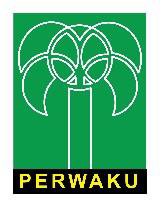Utilizing Qual2Kw software to calculate the pollution load capacity of Ciliwung River Segment IV (Depok City)
Abstract
ABSTRAK
Terletak di batas administratif Provinsi Jawa Barat dan Provinsi DKI Jakarta, Sungai Ciliwung merupakan sungai nasional. Panjang sungainya sekitar 120 km, dan luas daerah aliran sungainya sekitar 425 km³ (DAS). Pertumbuhan penduduk Kota Depok sebesar 1,79% setiap tahunnya menyebabkan peningkatan permintaan terhadap pangan, sandang, papan, dan kebutuhan lainnya. Akibat tumbuhnya berbagai bangunan industri dan pemukiman masyarakat untuk menampung kebutuhan manusia, pembuangan air limbah ke sungai akan semakin meningkat dan jumlah pencemaran yang masuk ke Sungai Ciliwung dapat melampaui daya dukungnya apabila tidak dilakukan upaya pengendalian pencemaran air. Oleh karena itu, perlu dilakukan penelitian untuk memastikan Kapasitas Beban Pencemar Sungai Ciliwung Segmen IV Kota Depok dengan menggunakan model simulasi dan software Qual2Kw. Sampel data primer air Sungai Ciliwung dan sumber pencemaran yang masuk ke dalamnya dikumpulkan untuk penelitian ini, selain observasi lapangan secara langsung. Kalibrasi data dilakukan setelah memasukkan data hidrolik dan kualitas ke dalam lembar kerja. Untuk memastikan data debit sungai masih memenuhi baku mutu air sungai kelas II, pemodelan dilakukan dengan menggunakan sumber-sumber sebagai berikut: (1) data eksisting; (2) data hulu baku mutu air sungai kelas II; dan (3) kondisi aliran sungai terkini dan data sumber pencemar trial & error. Temuan menunjukkan bahwa Sungai Ciliwung seksi IV Kota Depok memiliki kualitas air yang agak tercemar. Beban pencemar kriteria TSS dan COD masih dapat tertampung di Sungai Ciliwung seksi IV Kota Depok. Sementara itu, kriteria BOD untuk memikul beban polutan telah terlampaui; Oleh karena itu, untuk memenuhi ketentuan mutu air kelas II maka beban pencemar BOD perlu diturunkan sebesar 22,58% menjadi 37,50%.
Keywords
References
Andojo & Sudirman, D (2012). Hydrology and Hydraulics Mainstay River Discharge Calculation Module. Bandung: Bandung Institute of Technology.
Effendi, H. (2003). Review of Water Quality for Management of Aquatic Resources and Environment. Yogyakarta: Kanisius Printing.
Hadi, A. (2015). Environmental Sampling. Jakarta: Erlangga Publisher.
Kumala, FYE (2021). River Engineering. Bandung: UNPAR Press.
Mulyanto, HR (2018). River Functions and Characteristics. Yogyakarta: Mobius.
Said, NI (2017). Wastewater Treatment Technology – Technology and Applications. Jakarta: Erlangga Publisher.
Kompas Ciliwung Expedition Team (2009). Ciliwung Expedition – Kompas Journalistic Report . Jakarta: Kompas Book Publishers.
Andesgur, I., Suprayogi, I. & Handrianti, P. (2018). Analysis of River Water Pollution Load Capacity Using the Water Quality
Analysis Simulation Program (WASP) 7.3 Approach (Siak River Basin, Lower Siak District). Journal of Science and Technology 17 (1): 23-32.
Anggriawan, B. (2020). Analysis of Pollution of Domestic Waste, Industrial Waste, and Hospital Waste in the Ciliwung River. UNPAK Environmental Management Thesis.
Central Bureau of Statistics for the City of Depok (2023). Depok City Book in Figures 2023. Depok
Kannel, PR, Lee, S., Lee, YS, Kanel, SR, & Pelletier, GJ (2007) Application of Automated QUAL2Kw for Water Quality Modeling and Management in The Bagmati River. Nepal: Journal of Ecological Modeling 202(2007) 503-517.
Lusiana, N., Widiatmono, BR, & Luthfiyana, H. (2020). BOD Pollution Load and Characteristics of Dissolved Oxygen in the Brantas River, Malang City. Journal of Environmental Science UNDIP 18 (2): 354-366.
Masykur, HZ, Amin, B., Jasril, & Siregar, SH (2018). Analysis of River Water Quality Status Based on Environmental Quality (Case Study: Two River Streams in Tembilahan Hulu District, Indragiri Hilir Regency, Riau). Indonesian Journal of Environmental Dynamics 5 (2) 84-96.
Ministry of Environment and Forestry (2019). National Water Support Data Information Book. Jakarta
Ministry of Environment and Forestry (2019). Infographic book on national water support and capacity. Jakarta
Ministry of Environment and Forestry of the Republic of Indonesia, website: https://ppkl.menlhk.go.id/onlimo-2022/. accessed on 14 February 2023
Pelletier, GJ, Chapra SC, & Tao, H. (2005). QUAL2Kw – A framework for Modeling Water Quality in Streams and Rivers Using a Genetic Algorithm for Calibration. Journal of Environmental modeling & software 21 (2006)
-425.
Ratnaningsih, D., Syofyan, Y., Yuriska A., & Endah K. (2020) Pollution Potential of Persistent Organic Pollutants in the Ciliwung River Basin. Journal of Ecolab 14 (1) 21-30.
Renaldi, R., Marhadi, & Riyanti, A. (2021). Analysis of the Water Pollution Load Capacity of the Asam River in Jambi City. Journal of Environmental Cycle, 4 (2), 64-68
Rusydi, AF, Djuwansah, MR, & Suherman, D. (2010) Analysis of River Capacity in Garut City Against Organic Pollution Loads Using the Streeter-Phelps Method. Proceedings: presentation of the research results of the Research Center for Geotechnology - LIPI.
Triane, D., & Suharyanto (2015). Water Quality Modeling Using the QUAL2Kw Model (Case Study of Ciliwung Watershed). Journal of Environmental Engineering 21(2) 190-200.
Turner, DF, Pelletier, GJ, & Kasper, B. (2009) Dissolved Oxygen And Ph Modeling Of A Periphyton Dominated, Nutrient Enriched River. Journal of Environmental Engineering 645 – 652.
Wifarulah, YO, & Marlina, N. (2021). Analysis of BOD, COD, and TSS Pollutant Load Capacity in the Widuri River Using QUAL2Kw Software. Journal of Science and Technology 13 (1): 1-16.
Wiriani, ERE, Yarifudin, H., & Jalius (2018). Analysis of Sustainable Batanghari River Water Quality in Jambi City. Journal of Sustainable Development 1(1)
Yudo, S. (2010). Water Quality Conditions of the Ciliwung River in DKI Jakarta Region Viewed from Organic, Ammonia, Phosphate, Detergent and Coli Bacteria Parameters. Indonesian Water Journal 6 (1) 34-42.
DOI: 10.33751/injast.v5i1.8121
 Abstract views : 283
Abstract views : 283
Refbacks
- There are currently no refbacks.
Copyright (c) 2024 Indonesian Journal of Applied Environmental Studies

This work is licensed under a Creative Commons Attribution-NonCommercial-ShareAlike 4.0 International License.













